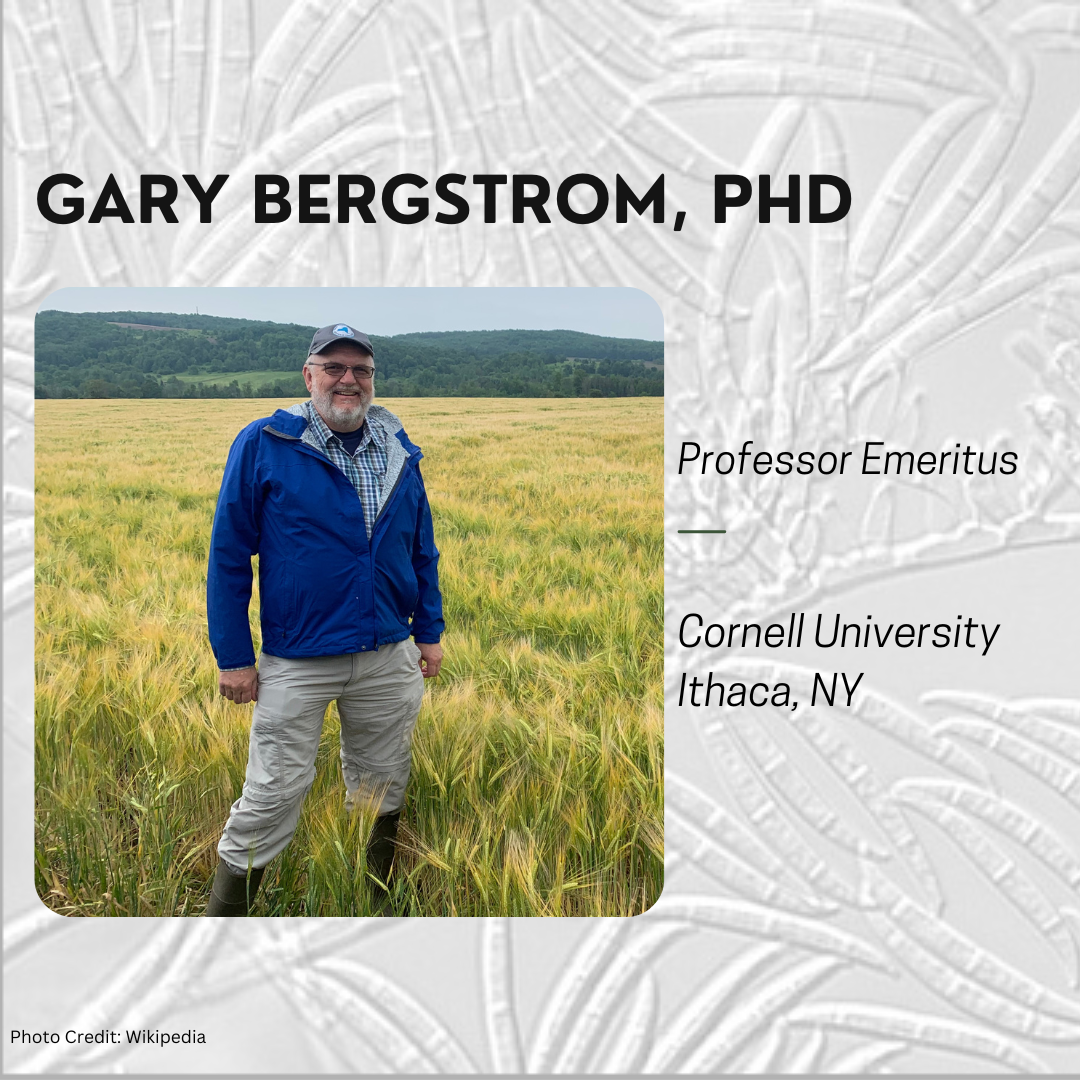Featured Researcher Bio - Gary Bergstrom 2024

Meet Gary Bergstrom, emeritus professor in the School of Integrative Plant Science Plant Pathology and Plant-Microbe Biology Section at Cornell University. Bergstrom worked on FHB prior to the formation of the USWBSI and was an inaugural participant in the formation of the Initiative. His USWBSI-funded research focused on epidemiology and coordinated management projects for FHB.
Intrigued by the Intersection of Microbes and Plants
Bergstrom was inspired to be a scientist by his father who was a geologist/paleontologist. He was interested in microbes and plants, so naturally plant pathology was the intersection of those two passions. Bergstrom attended Purdue University and obtained his bachelor of science in biological science with concentrations in microbiology and botany. As an undergraduate, he worked as a research assistant in the J.C. Arthur Herbarium of Rust Fungi which was an influential experience. After graduating, Bergstrom immediately began his master of science at Purdue University under the direction of Ralph Nicholson. He then moved to the University of Kentucky, where he received his doctorate in plant pathology under the advisement of Joseph Kuc. Bergstrom joined the Cornell University faculty as an assistant professor in the Department of Plant Pathology in 1981. Since then, he has been promoted to associate and full professor and also served in the role of acting chair and chair.
Collaborating on FHB Through the USWBSI
As one of the inaugural participants in the formation of the USWBSI, Bergstrom has benefited from its unique collaborative approach. He has attended nearly every National Fusarium Head Blight Forum and has been actively involved in the coordinated management projects and committee activities. Over the years one of his most memorable USWBSI-funded projects included collaborating with many colleagues in the U.S. and Canada on epidemiology/aerobiology/pathogen population research. This project provided field-based, quantitative evidence of long-distance atmospheric dispersal of Fusarium graminearum ascospores. The results allowed them to estimate that on average approximately one-third of spore inoculum for FHB in a wheat field came from within-field sources (i.e., overwintered corn residue) and two-thirds of the inoculum came from atmospheric deposition of spores originating outside of the field.
Research on the extensive population biology of Fusarium graminearum in New York, demonstrated the presence of four mycotoxin-producing chemotypes in the state (15 ADON, 3 ADON, NIV, and NX2). Bergstrom and colleagues found that populations in regions under intensive crop cultivation were predominately 15 ADON genotypes; while populations where agriculture was sparse showed a greater proportion of 3 ADON and NX genotypes. Finally, they postulated that populations on non-cultivated grasses influence the population structure in regions with limited agriculture and showed that Fusarium is widely present in the inflorescences and stubble of native grasses and can cross-infect cereal crops.
Focused on FHB Research into Retirement
While technically retired, Bergstrom will continue to conduct some research as a professor emeritus. He merged his research lab with Mark Sorrells, Cornell University’s small grains breeder, and together they are collaborating on disease resistance in malting barley varieties adapted to the Northeast. In addition, he continues to characterize the isolated populations of Fusarium graminearum in his large collection accessioned over decades in New York.
For more information about Dr. Gary Bergstrom's research, visit his faculty webpage.
To learn more about others in the FHB community, check out all the previous USWBSI Featured Researchers.
